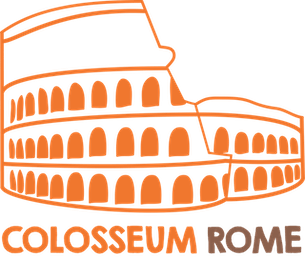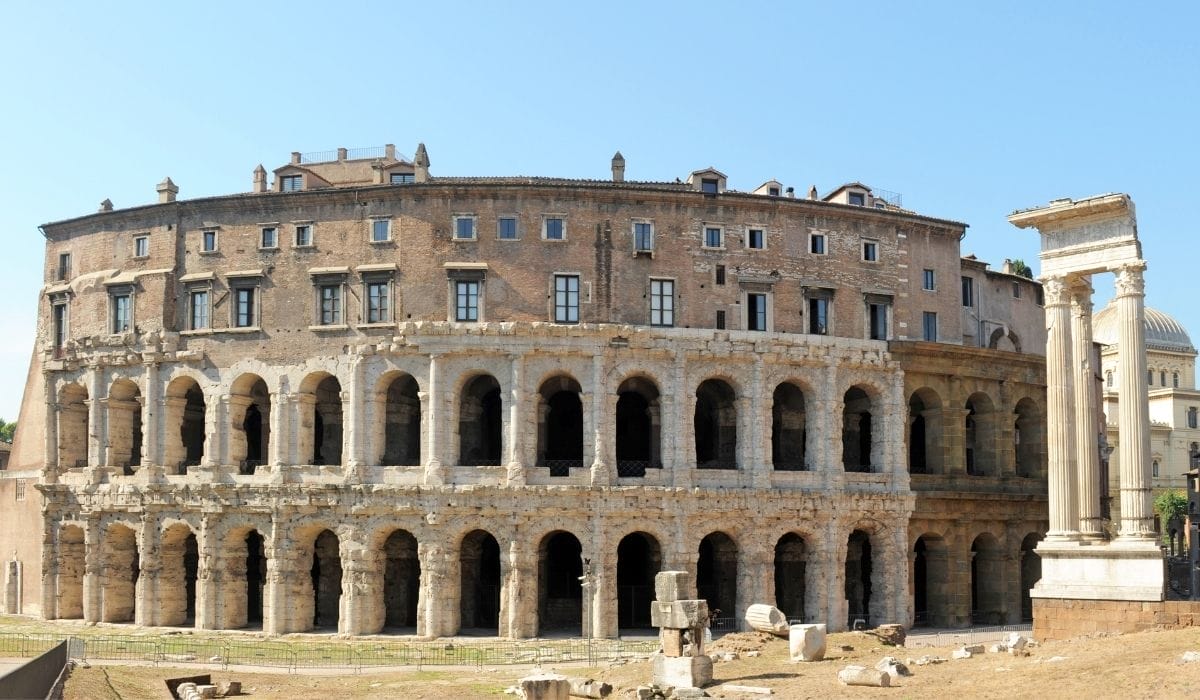
Theatre of Marcellus: The History Behind Teatro di Marcello
Curious about the ancient Theatre of Marcellus in Rome and its fascinating history? This guide covers everything you need to know about visiting this iconic Roman landmark.
Discover how to visit the Theatre of Marcellus, including the best ways to get there from the city center and tips for exploring the area. For history enthusiasts, learn about the rich past of the Theatre of Marcellus, built under the reign of Emperor Augustus. Uncover fun facts about the Marcello Theater, from its original purpose to its transformation over the centuries.
Start your journey and explore the timeless charm of the Theatre of Marcellus in Rome!
Contents
- 1 Should You Get Theatre Of Marcellus Tickets?
- 2 Where Is The Theater Of Marcellus Located?
- 3 How to Get to the Theater of Marcellus
- 4 Can You Visit The Theater Of Marcellus Today?
- 5 Theatre Of Marcellus History Facts
- 6 What Was The Theatre Of Marcellus Made Of?
- 7 Who Designed And Built This Monument?
- 8 All The Details About Theatre Of Marcellus Floor Plan
- 9 Theatre Of Marcellus Facts Only Romans Know About
- 10 Top Attractions near The Theatre of Marcellus in Rome
- 11 3 Nicest Hotels Near to the Theater of Marcellus
- 12 Frequently Asked Questions about Marcellus Theatre
- 13 Conclusion
Should You Get Theatre Of Marcellus Tickets?
No, you don’t need any tickets to see the theater.
However, you might want to consider getting tickets for an overall tour of the area including the Colosseum and Roman Forum. In addition, during the summer the city often puts on little concerts in the theater.
It is run under the Estate Romana program from June through to October.
Where Is The Theater Of Marcellus Located?
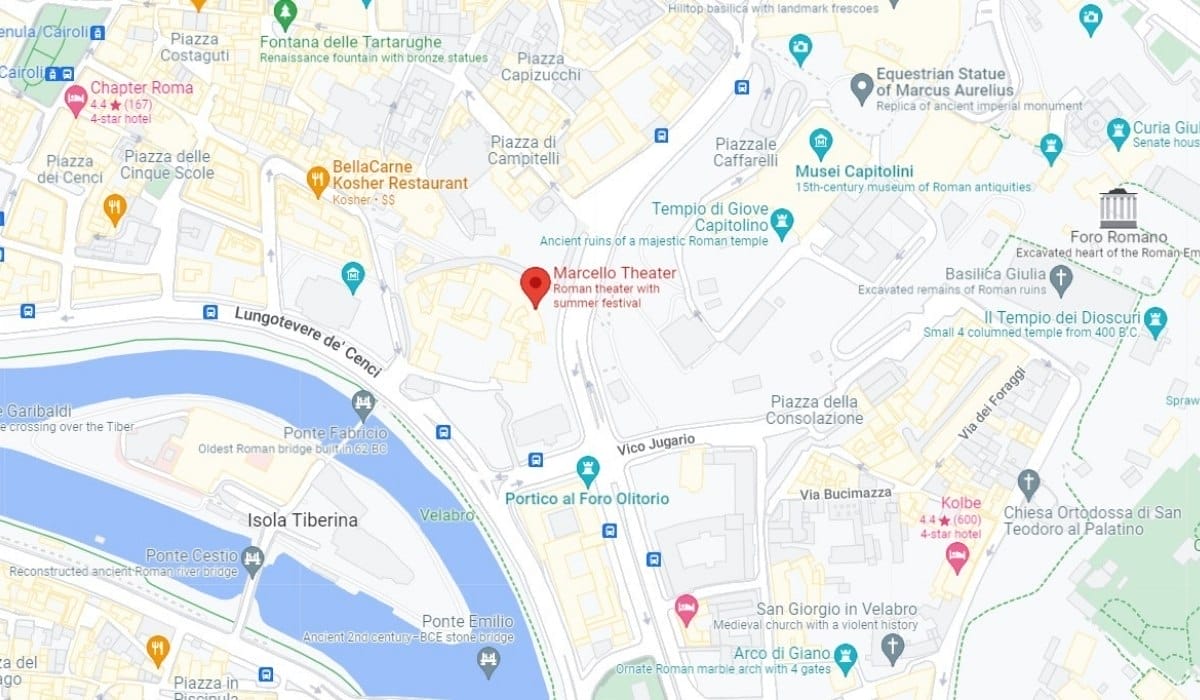
You will find the Theatre of Marcellus in the heart of the Jewish Ghetto, not far from the banks of the River Tiber. The official address is Via Del Teatro di Marcello. Take a quick look at the map here.
How to Get to the Theater of Marcellus
Many buses stop right at the Teatro Marcello/Ara Coeli stop. Pick from lines 30, 44, 51, 63 as well as all odd number buses from 81-87.
Can You Visit The Theater Of Marcellus Today?

The good news is that the Theater of Marcellus is accessible to this day. You can still see the outline of the original structure. On the upper levels you will find the red brick additions added in later years.
The first suggestion we have when visiting the Theatre of Marcellus (one of the most impressive Roman theatres) is to head up the Capitoline Hill. From there, you will get an excellent view of the structure amongst the buildings of Rome!
Next, head on down to get a good view of the outside as you walk around the area.
Tip – You cannot access the interior, but you should definitely make a point when you are in the area to stop by.
Theatre Of Marcellus History Facts

Here are just a few little Theater of Marcellus facts to help you get a flavor for the great Roma Teatro Marcello!
- The Theatre of Marcellus Rome was the biggest in the Roman Empire
- The diameter was a whopping 111m
- Julius Caesar designated the area for its construction, but he was assassinated before it could begin
- The theater is still in use to this day! During the summer the city puts on little concerts in some of the spaces
- The Sheldonian Theater in the United Kingdom was modeled on a similar design.
What Was The Theatre Of Marcellus Made Of?
Like many Roman constructions, the major part of the Theater of Marcellus Rome is made of Tuff. This is a stone created by several layers of hardened volcanic ash. The use of tuff, combined with elements of Roman architecture such as arches and columns, contributed to the durability and longevity of this ancient Roman theatre.
The compacted nature of the stone means that it is extremely durable. That, and the fact that the Roman theater of Marcellus has been in almost continuous use has contributed to its preservation.
Who Designed And Built This Monument?
The Theatre of Marcellus Rome was the concept of Julius Caesar. After finally beating his rival Pompey for control of ancient Rome, he wanted to design a huge symbol of power and authority.
Since that guy Pompey already had a theater, Julius Caesar wanted a bigger – and better one. Unfortunately, he got bumped off before the project could really get started.
Roman emperor Augustus picked up the construction and paid privately to have it completed. He dedicated it to his nephew Marcellus who had died in 23BC.
All The Details About Theatre Of Marcellus Floor Plan
If you take a look at the theater of Marcellus Plan here, you will perhaps notice it looks a little similar to the Colosseum.
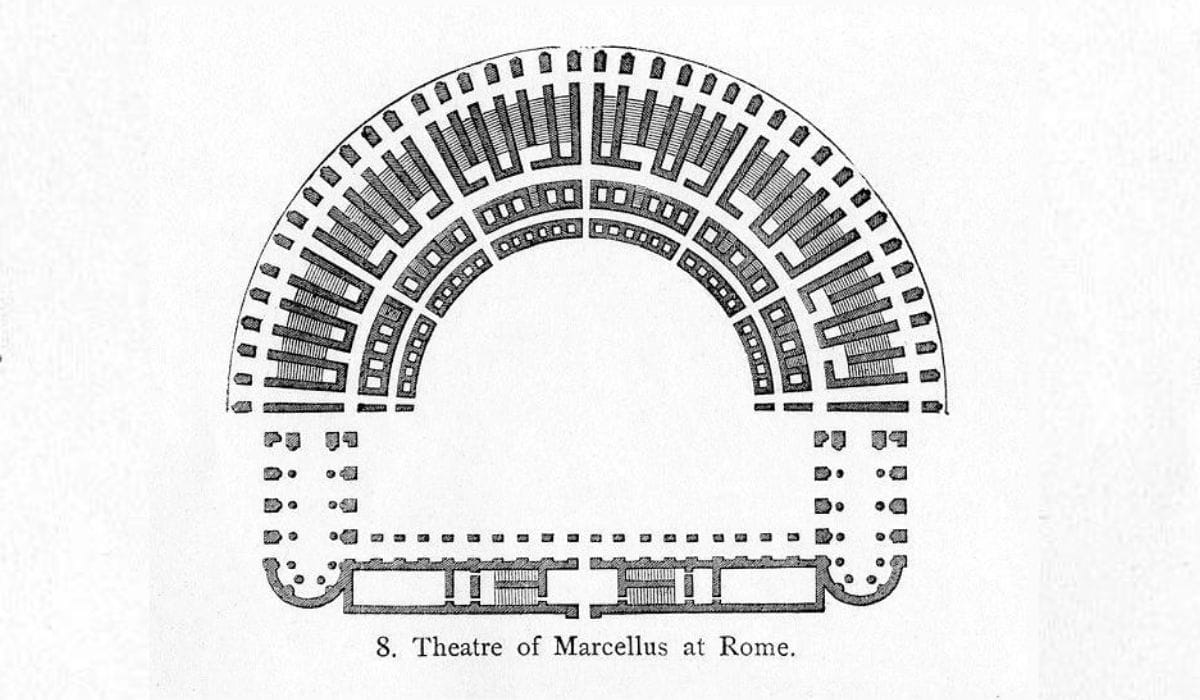
That’s because some elements of the Colosseum were influenced by its style and design.
Standing at 33m high, the theater was a huge entertainment space with enough room for over 17000 – some say 20000 – spectators. The design of Teatro di Marcello included different types of seating arrangements, similar to other Roman theatres, where social status determined the seating location.
Theatre Of Marcellus Facts Only Romans Know About
- There was a special seating requirement in the Theater of Marcellus based on a class system, a practice that was common in Roman theatres during the Roman period.
- The lower ends of the seats were made of stone and were for the influential and rich classes
- There were three types of columns used in the construction – the Doric, Ionic and the Assuming Corinthian
Top Attractions near The Theatre of Marcellus in Rome
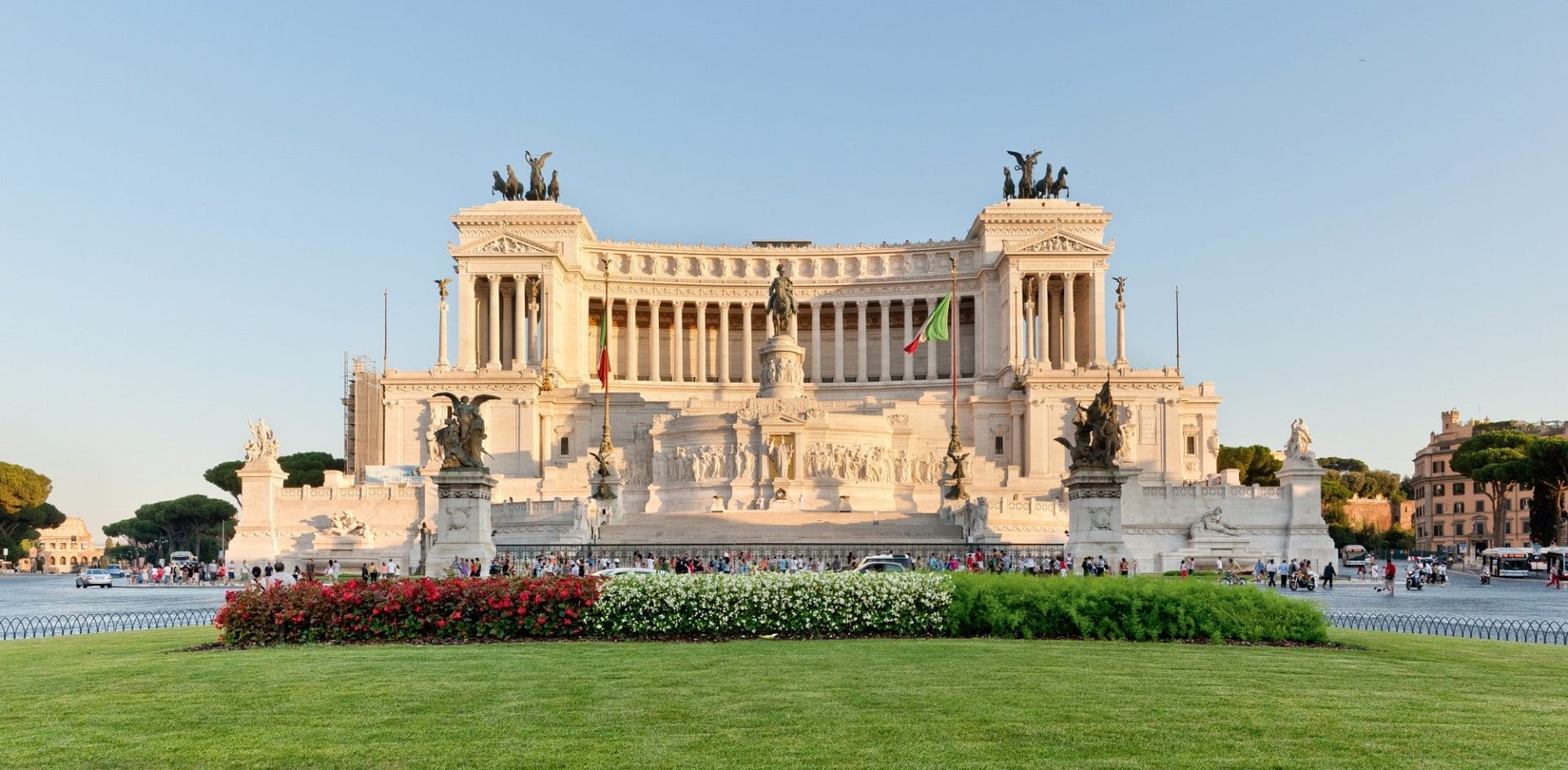
After discovering the fascinating history of the Theatre of Marcellus, you're in the heart of Rome, surrounded by incredible sights waiting to be explored.
With many attractions just a short walk away, you can easily continue your journey through the city's rich history and vibrant culture.
- Capitoline Hill – Just a few steps away, Capitoline Hill offers more than just a great view. As one of Rome's most significant historic sites, it’s home to the Capitoline Museums (see tickets here), where you can dive into the city's ancient art, sculptures, and fascinating artifacts.
- Jewish Ghetto – Take a stroll through the nearby Jewish Ghetto (consider this Jewish Ghetto walking tour), one of Rome’s oldest neighborhoods. With its charming streets, historic synagogues, and delicious kosher eateries, you’ll find a mix of history and culture that feels worlds away from the typical tourist spots.
- Tiber Island – Cross the bridge to Tiber Island for a unique experience. This small island in the Tiber River (see river cruise tickets here) is perfect for a quick escape from the hustle and bustle, with its historic hospital, church, and tranquil riverside spots that invite you to relax.
- Bocca della Verità – Need a quirky photo op? Head to the Bocca della Verità (Mouth of Truth), a short walk from the theatre. Legend says it will bite off the hand of any liar who puts their hand inside—great for a fun, quick stop!
- Piazza Venezia – Just up the road, Piazza Venezia is hard to miss with its impressive Altare della Patria monument. Climb to the top for sweeping views of the city, or simply enjoy the lively atmosphere of this central Roman square.
- Portico d'Ottavia – A stone's throw from the theatre, this ancient ruin is all that remains of a grand public building from the Roman Empire. Wander through the columns and arches to get a sense of what life was like in ancient Rome.
- Trajan's Market and Forum – A short walk from the Theatre of Marcellus, Trajan's Market (tickets available here) offers a fascinating glimpse into ancient Roman commerce. With its multi-level ruins and remnants of shops and offices, it’s like stepping into a bustling Roman market from centuries ago.
With these remarkable attractions just around the corner from the Theatre of Marcellus, you’re never far from something exciting to see or do as you explore this captivating part of Rome.
3 Nicest Hotels Near to the Theater of Marcellus
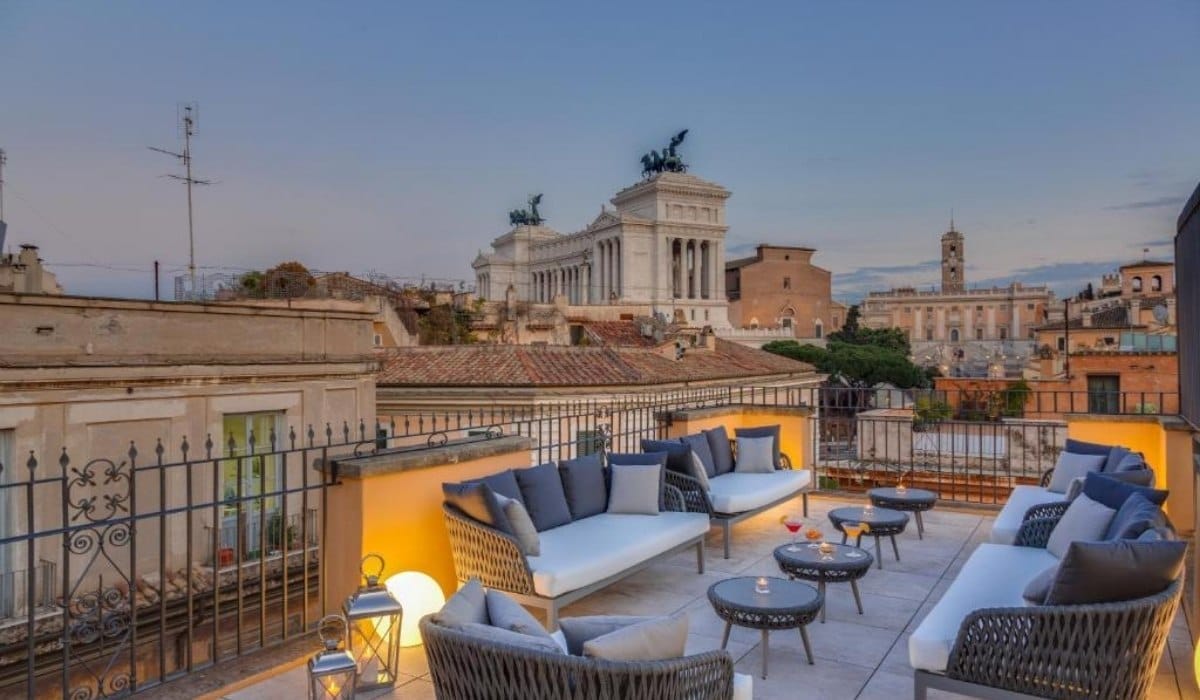
The area around the Theater of Marcellus has plenty of hotels!
These three great ones are all located less than 300 meters from the theater.
The Otivm Hotel gets a rating of 9 on tripadvisor. With a stunning rooftop terrace with amazing views and gorgeous decor, it is easy to see why.
The little Pension Reginella is pretty special too Located in a beautifully refurbished old townhouse with exposed wooden beams, it is a charming location.
Finally, the 47 Boutique Hotel offers wonderful views, decor and a luxury vibe.
Frequently Asked Questions about Marcellus Theatre

Who built the Theatre of Marcellus?
The theater was started by Jusius Caesar and finished by Augustus.
Why was the Theater of Marcellus built?
Julius Caesar wanted to build a huge theater to compete with his rival Pompey.
What was the Theatre of Marcellus used for?
The theater was used for plays and other entertainment, and can still be visited today!
Conclusion
This mini Colosseum is definitely worth a quick look when visiting Rome. Now, check out this cool tour of Rome which will hit off some other high points on your itinerary!
Make sure to cover off the Roman Forum, the Colosseum and perhaps even the Vatican City. With these tips, your journey through ancient Rome will surely be one to remember!
Fanny, an ardent admirer of ancient history and architecture, has been fascinated by the Colosseum since her first visit to Rome in 2012. As a key contributor to the Visit Colosseum Rome blog, she brings her passion for the Roman Empire’s monumental legacy to every article and guide.
